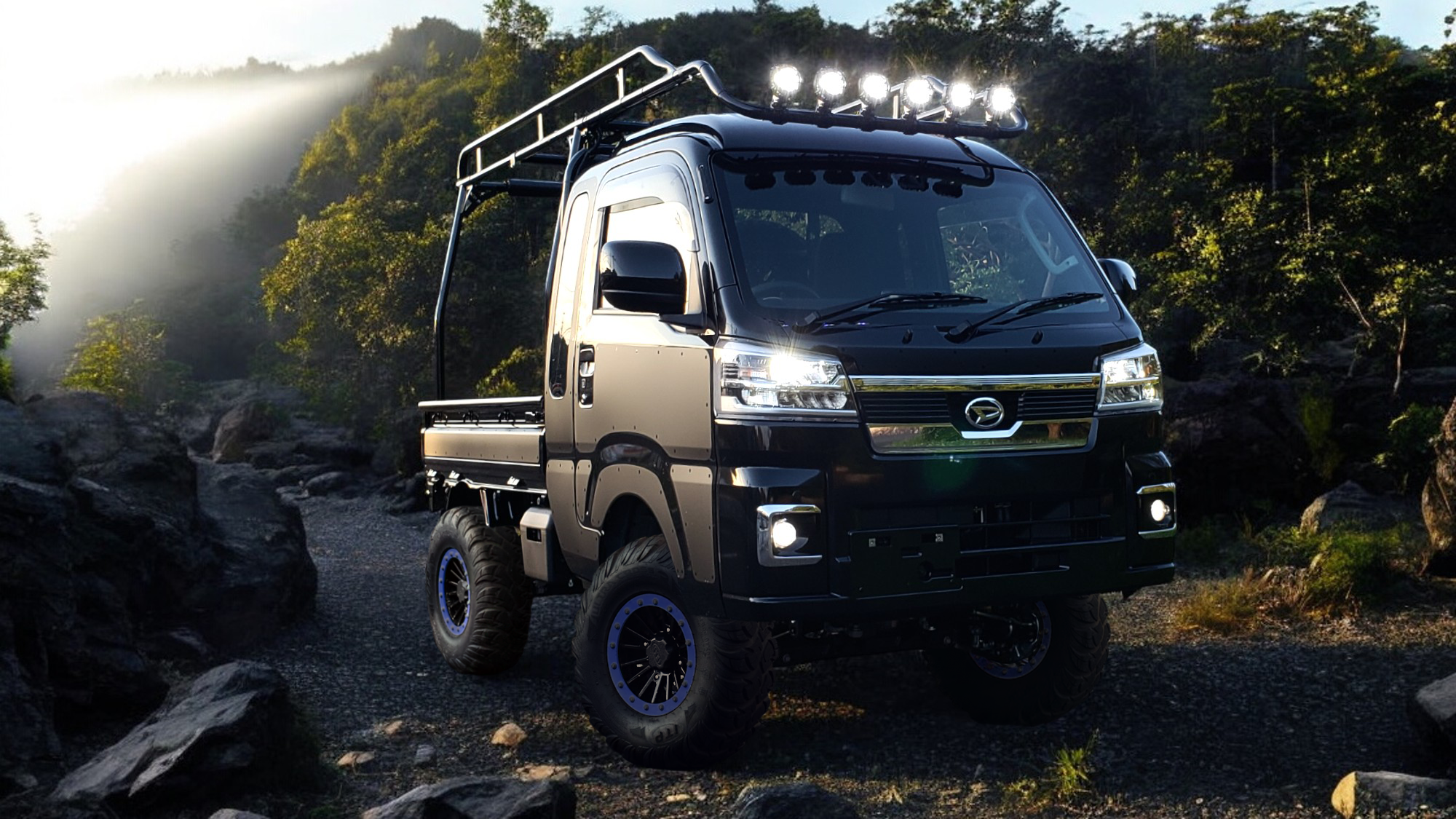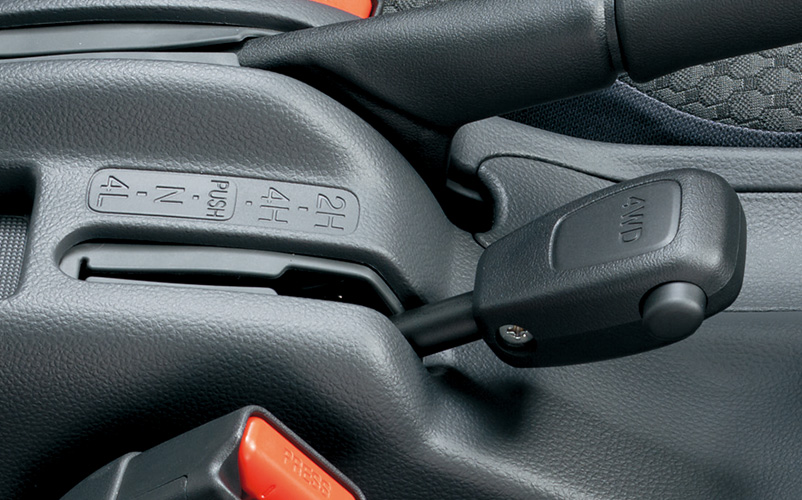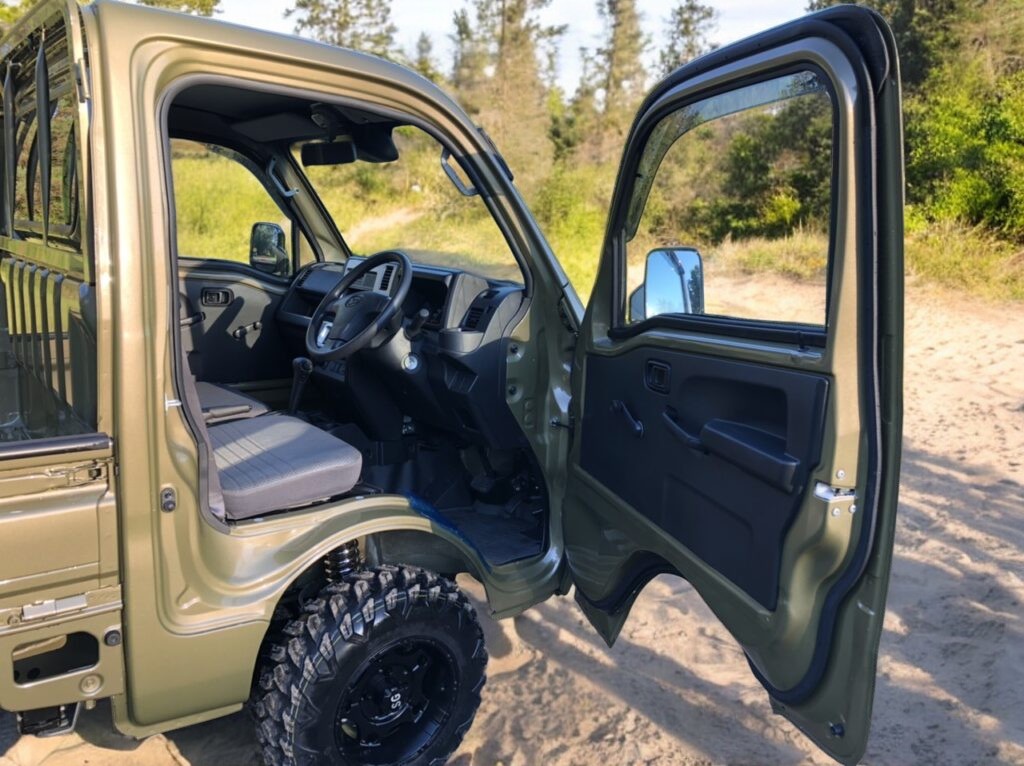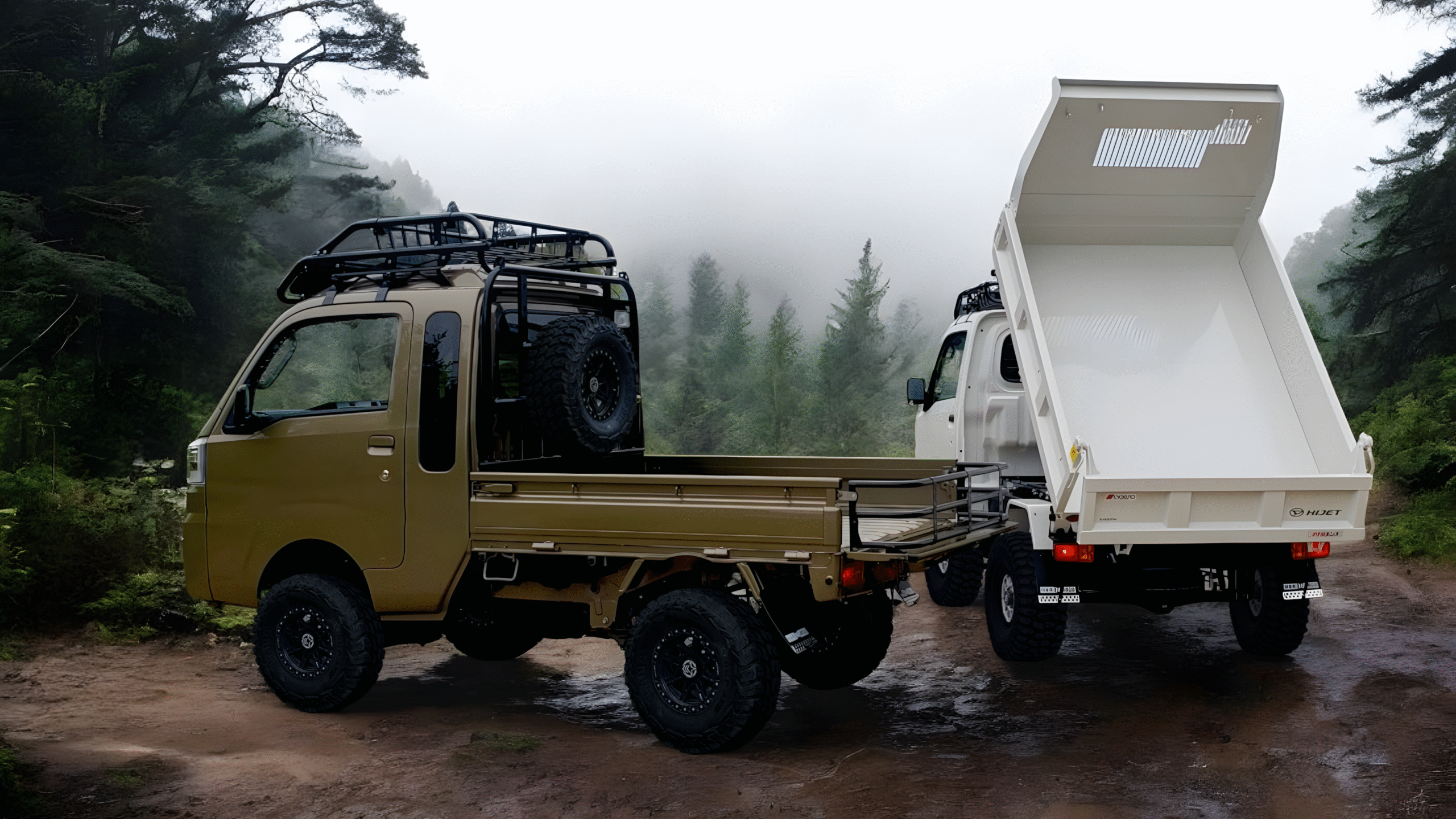How To Choose The Right Mini Truck
Japanese mini trucks come in so many different model types and configurations, it can seem overwhelming. So let’s make your decision easier with this useful guide.
Jump To Section
You’ve set your sights on a Japanese mini truck. After doing your research, it’s clear these mini trucks outperform UTVs—and even golf carts. But when faced with the range of models for sale here at Mini Truck Depot, it can be overwhelming trying to decide which one will best suit your needs.
If this sounds familiar, you’re in the right place. Keep reading as we guide you through an easy, step-by-step process to help identify what you need from your mini truck and which model is the right fit. And if you’re still unsure about any specific mini trucks for sale, just click the ‘Ask A Question’ button on the listing to reach out—we’re here to help with any questions you may have. Ready? Let’s get started with the first question you need to ask yourself:
How Far Off-Road Do You Need To Go?
Here’s the first question to consider: how far off-road do you really need to go? Let’s break it down.
All the Japanese mini trucks for sale here are equipped with 4WD and are built strictly for off-road use. So, what’s the point of this question? To clarify, here are two example scenarios with fictional names to illustrate the differences:
Ivy College, AZ
Ivy College is a small liberal arts college in Arizona with around 1,500 students spread across a 230-acre campus. The maintenance department has a team of 12 people responsible for grounds and building upkeep. They also need to transport equipment between buildings, using a fleet of four mini trucks for the job.
The campus has an extensive network of private, paved roads, and it’s rare for their mini trucks to venture onto unpaved surfaces. Plus, being located in Arizona, they don’t have to deal with snow.
Ron, Rancher, TX
Ron operates a 300-acre ranch in Texas. He relies on his mini truck in all weather conditions, covering a range of terrain—from packed gravel tracks to open fields. It’s his go-to for hauling fence posts, feed, and other equipment.
These are two very different types of users, yet mini trucks work well for both. The key difference? Only Ron requires the full off-road capability that his mini truck offers. On the other hand the campus mini trucks only occasionally deal with rain-slicked roads, but traction issues are minimal.
For Ron, a body lift and aggressive off-road knobby tires are essential to handle rugged conditions. In contrast, Ivy College’s mini trucks perform just fine without a lift, using a less aggressive set up.
Quick takeaway …
You need a mini truck with a body lift and extreme, knobby off-road tires if:
- You’ll be driving on genuinely off-road terrain with slippery, muddy, or uneven surfaces.
- Extra ground clearance is necessary to prevent it from bottoming out.
- Off-road performance is more important than maximizing fuel economy.
You should opt for less aggressive off-road tires if:
- Your driving will be almost entirely on paved or hard-packed private property tracks (not public roads, of course).
- Fuel economy is a higher priority than extreme off-road traction.

What Type of Off-Roading: Gravel Tracks or Steep Slopes?
If you’re heading off the beaten track, the question becomes: how much serious 4×4 capability do you actually need? Up next, we’ll be looking at transmission options, and Japanese mini trucks offer a range of choices designed to handle everything from basic gravel tracks to steep slopes and muddy streams.
So, before diving into these details, take a moment to think about where you’ll be using your mini truck. Rate that terrain on a scale of 1 to 10—1 being mostly gravel, and 10 representing challenging, treacherous slopes and muddy streams. Got your number? Great. Now, let’s explore your transmission options.
Regular Automatic Transmission
There’s nothing quite like an automatic transmission to make off-road driving simple. In these compact mini trucks, it turns the experience into a straightforward, point-and-go operation. You’ll find 4-speed automatic transmissions like this in older Daihatsu Hijet models (up to the 2021 generation) as well as in current Suzuki Carry models. They’re reliable and get the job done, but they sit at the lower end of the spectrum when it comes to off-road capability.
Advantages:
- Easy operation
Disadvantages:
- Less control for the driver
- No rear differential lock
- No hi-lo range
Where do these standard automatic transmission mini trucks fall on the 1 to 10 off-road capability scale?
- Rating: 1 to 5
CVT (Continuously Variable Transmission)
It’s true that this is another type of automatic transmission. It’s available exclusively on the latest model Daihatsu Hijets, launched at the end of 2021. Not only does it offer noticeably better fuel economy compared to the regular automatic transmissions found in older Hijet models and current Suzuki Carrys, but it also brings a new feature to the table—one that has never been available on automatic mini trucks before: a locking rear differential.
This locking differential provides an extra boost of traction, helping the mini truck get out of low-grip situations that would have posed a challenge for older automatic models.
Advantages:
- Easy operation
- Better fuel economy than regular automatics
Disadvantages:
- Less control for the driver
- No hi-lo range
Where do these CVT-equipped mini trucks fall on the 1 to 10 off-road capability scale?
- Rating: 1 to 7
5-Speed Manual Transmission
Now we’re getting into the more hard-core options. Both Suzuki and Daihatsu offer 5-speed manual transmission choices for their mini trucks. Having the ability to select gears manually provides greater control, which is especially valuable when navigating steep descents or challenging terrain.
However, these basic manual transmission models lack both a hi-lo range and a locking rear differential. This limitation places them on par with the CVT-equipped models that do include a locking differential, balancing out the off-road capabilities between the two.
Advantages:
- Full control over gear selection to suit the terrain
Disadvantages:
- Requires more effort from the driver
- Less intuitive to operate, especially for those unfamiliar with manual transmissions
- No rear differential lock
- No hi-lo range
Where do these 5-speed manual transmission mini trucks fall on the 1 to 10 off-road capability scale?
- Rating: 1 to 7
5-Speed Manual + Hi-Lo Range + Rear Diff Lock
Now we’re at the most extreme option: Not only do you get the control of a 5-speed manual transmission, but with the addition of a selectable hi-lo range, even the steepest slopes can be tackled with ease. Whether climbing up or crawling down, selecting the ultra-low ‘L’ gear (in Daihatsu models) or ‘4L’ (in Suzuki models) provides the traction and control needed for the most demanding conditions.
On top of that, you also get a locking rear differential. This combination results in the ultimate off-road setup: 4×4 + manual transmission + locking rear differential + hi-lo range—a full house of off-road capability.
Advantages:
- Maximum control for tackling any terrain
- Capable of handling the most extreme off-road conditions
Disadvantages:
- Requires more driver effort
- Lower fuel economy compared to other models (though still efficient)
Where do these fully-equipped mini trucks fall on the 1 to 10 off-road capability scale?
- Rating: 1 to 10

Shifting With Your Left Hand

There’s no way you’ve missed it, so let’s get straight to the point: Japanese mini trucks are built with the steering wheel on the right side and the gearshift on the driver’s left. Will this be a problem for you? Here’s something to consider.
Since you’ll be driving your mini truck off-road—most likely on your own property—you’ll have plenty of space to get familiar with it. Whether it’s around the farm or land you know like the back of your hand, it won’t take long before you’re fully comfortable driving from the right side of the cab. In fact, the only real adjustment we hear from long-time mini truck owners isn’t actually about driving from the right side at all. It’s that they still catch themselves trying to get in from the wrong side of their mini truck, even months after buying it!
The same goes for the gearshift. Sure, your left hand will have to learn some new habits, but since you’ll be off-road, you’ll have all the time you need to get used to it. A little practice around your property, and soon enough, shifting gears in your Japanese mini truck will feel just as natural as driving anything else on the farm.
However, if you’re genuinely concerned about shifting with your left hand, there are options. The 3-speed automatic or the latest Daihatsu CVT transmissions eliminate that concern altogether. With these automatic transmissions, all it takes is selecting ‘Drive,’ and then it’s simply a matter of starting, stopping, and steering. Easy.
Passengers Coming With You?
One of the great things about Japanese mini trucks is the variety of body styles available. There are regular cabs, extended cabs, dump beds, crew cabs, and van bodies. A key factor in deciding which model is right for you will be how many people need to ride in your mini truck.
If it’s just you—out on your own, hauling feed to the cattle, mending fences, or handling other tasks—any of the regular cab and dump bed variants will get the job done. However, if you plan to take kids or grandkids along around the farm, the Daihatsu Deckvan is a popular choice. It features wide sliding rear doors and additional rear seats, making it easy and comfortable to bring extra passengers.
For business users managing large private properties—like hospitals—that need to transport both people and equipment between buildings, the Daihatsu Hijet Cargo is a practical solution, offering enclosed space and flexible seating for added convenience.

Need To Haul Or Dump?
Hauling, No Dumping
Most mini truck users aren’t just going to be moving people around. It’s pretty likely you’re going to want to either load something into the back or even dump stuff. So, what are the options? Here’s the quick overview:
If you need to haul but don’t need a dumping function, then your best options will be one of the fixed bed models, such as the Daihatsu Hijet regular cab. The regular cab models provide a bed length that’s significantly longer than any regular UTV, offering a surprising amount of space despite the mini truck’s compact exterior dimensions.
However, if you’re willing to sacrifice a few inches of bed length, upgrading to an extended cab model like the Hijet Jumbo can be a smart choice. The inches lost from the bed length are used to extend the cab backwards, giving you more storage space behind the seats. Plus, the extended cab also allows for seat reclining, adding extra adjustability when you’re spending long hours driving off-road.

Dumping
If you really need a dumping rear bed, there are several options to consider. First up is the LD (Light Duty) Dump Daihatsu Hijet model. For this mini truck, Daihatsu essentially takes the regular cab model and fits a hydraulic lift arm beneath the bed. It’s well-suited for light-duty dumping tasks and can handle loads of up to 1,000 lbs.
However, if you plan to use the dumping function more frequently or for heavier materials, nothing beats the HD (Heavy Duty) Dump model. This one features an extra-thick, reinforced steel bed for added durability and offers a choice between electro-hydraulic or PTO (Power Take-Off) mechanisms. Now, this model can haul and dump loads of up to 1,500 lbs, making it the go-to option for more demanding work.
Take Your Mini Truck Pick
We’ve covered all the key steps you need to work through to determine which mini truck will be best for you, so has this process helped you narrow down your choice? Hopefully, you’re not feeling as overwhelmed by the options as you were when you started reading. Having helped sell a wide range of mini trucks to all kinds of users across the U.S., we’ve gained valuable insight into which models work best in different scenarios.
So, if you’re still unsure, feel free to reach out—we’re always happy to help. And if you spot a specific mini truck for sale here and have questions about that particular model, just click the ‘Ask A Question’ button on the listing, and we’ll be glad to provide the details you need.

